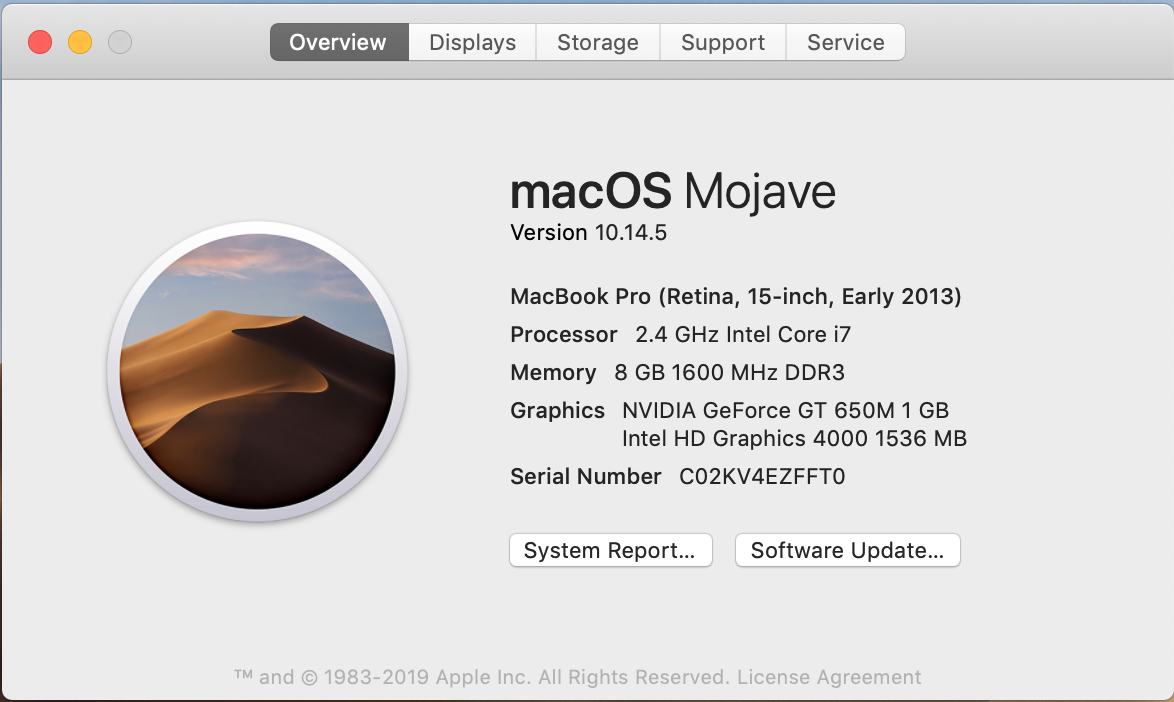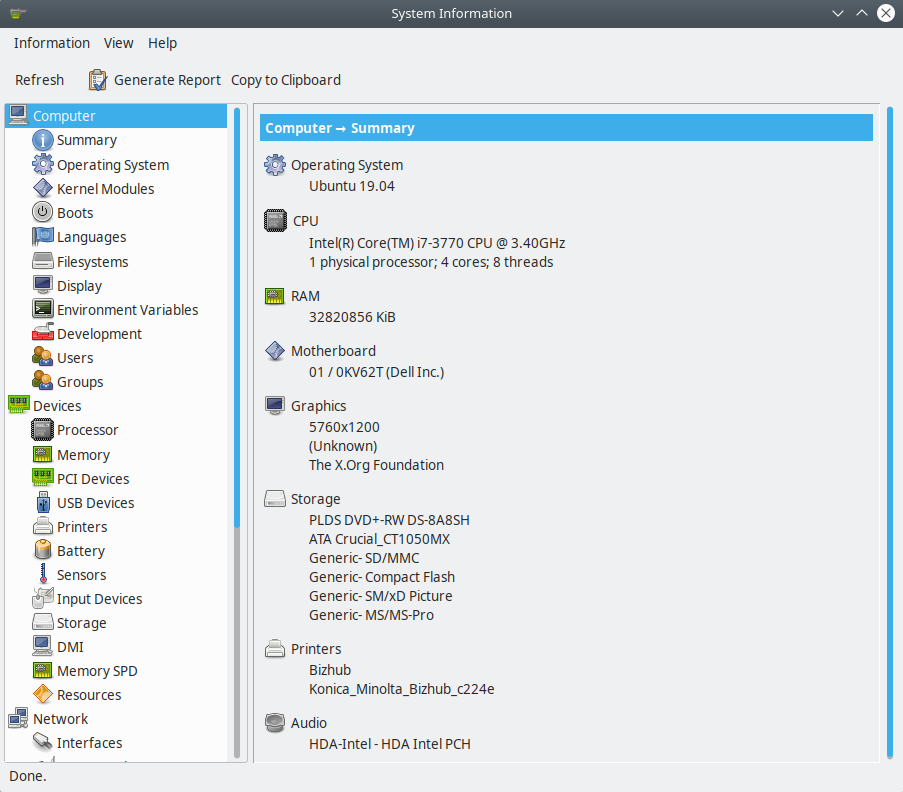Introduction
Overview
Teaching: 30 min
Exercises: 30 minQuestions
What is High-Performance Computing?
What is a HPC cluster or Supercomputer?
How my computer compares with a HPC cluster?
Learn the components of the HPC
Learn the basic terminology in HPC
High Performance Computing
High-Performance Computing is about size and speed. A HPC cluster is made of tens, hundreds or even thousands of relatively normal computers specially connected to perform intensive computational operations. In most cases those operations involve large numerical calculations that take too much time to complete and therefore are simply unfeasible to perform on a normal machine.
This is a very pragmatic tutorial: more time on examples and exercises, less time on theoretical stuff. The idea is that after these lessons, you will have learned how to enter into the cluster, compile code, execute using the queue system and transfer data in an out the cluster.
What are the specifications of my own computer?
Check your computer, gather information about the CPU, number of Cores, Total RAM memory and Hard Drive.
The purpose of this exercise is to compare your machine with our clusters
You can see specs for our clusters Spruce Knob and Thorny Flat
Try to gather an idea on the Hardware present on your machine and see the hardware we have on Spruce Knob or Thorny Flat
Here are some tricks to get that data from several Operating Systems

 If you want more data click on "System Report..." and you will get:
If you want more data click on "System Report..." and you will get:

In Linux gathering the data from a GUI depends a lot from more from the exact distribution you are using here some tools that you can try
KDE Info Center

Linux Mint Cinnamon System Info

Linux Mint Cinnamon System Info

Central Processing Units
CPU Brands and Product lines
There are only two manufacturers that hold most of the market for PC consumer computing: Intel and AMD. There are several others manufacturers of CPUs but those are mostly for Smart Phones, Photo Cameras, Musical Instruments, or very specialized HPC clusters and equipment.
More than a decade ago, the main feature used for marketing purposes on a CPU was the speed. That has changed now as CPUs are not getting much faster due to faster clock speed. It is hard to market the performance of a new processor with a single number. That is why CPUs are now marketed with “Product Lines” and the “Model numbers” those number bear no direct relation with the actual characteristics of a given processor.
For example, Intel Core i3 processors are marketed for entry level machines more tailored to basic computing tasks like word processing and web browsing. On the other hand, Intel’s Core i7 and i9 processors are for high-end products aimed at the top of the line gaming machines able to run the most recent titles at high FPS and resolutions. Machines for enterprise usage are usually under the Xeon Line.
On AMD’s side, you have the Athlon line aimed at entry-level users, From Ryzen(TM) 3 for basic applications, all the way to the Ryzen(TM) 9 designed mostly for enthusiasts and gamers. AMD also has product lines for enterprises like EPYC Server Processors.
Cores
Consumer level CPUs up to 2000s only had one core, but Intel and AMD both hit a brick wall with incremental clock speeds improvements. The heat and power consumption scales non-linearly with the CPU speed. That brings us to the current trend and instead of a single core, CPUs now have two, three, four, eight or sixteen cores on a single CPU. That means that each CPU (in marketing terms) is actually several CPUs (in actual component terms).
Hyperthreading
Hyperthreading is intrinsically linked to cores and is best understood as a proprietary technology that allows the operating system, to recognize the CPU as having double the amount of cores.
In practical terms, a CPU with four physical cores would be recognized by the operating system as having eight virtual cores, or capable of dealing with eight threads of execution. The idea is that by doing that it is expected that the CPU is able to better manage the extra load, by reordering execution and pipelining the workflow to the actual number of physical cores.
In the context of HPC there is still debate if activating Hyperthreading is beneficial for intensive numerical operations and the answer is very dependent on the code. In our clusters Hyperthreading is disabled on all compute nodes and enabled on service nodes.
CPU Frequency
Back in the 80s and 90s CPU frequency was the most important feature of a CPU or at least that was the way it was marketed.
Other names for CPU frequency are “clock rate”, or “clock speed”. CPUs work by steps instead of continuous flow of information. The speed of the CPU is today measured in GHz, or how quickly the processor can process instructions in any given second (clock cycles per second). 1 Hz equals one cycle per second, so a 2 GHz frequency can handle 2 billion instructions for every second.
The higher the frequency the more operations can be done. However, today that is not the whole story. Modern CPUs have complex CPU extensions (SSE, AVX, AVX2 and AVX512) that allow the CPU to execute several numerical operations on a single clock step.
From another side, CPUs are now able to change the speed up to certain limits, raising and lowering the value if needed. Sometimes raising the CPU frequency of a multicore CPU means that some cores are disabled as result.
Another technique used often by gamers is overclocking. Overclocking, is when the frequency is altered beyond the manufacturer’s official clock rate by user-generated means. In HPC this is often not applied as overclocking increases the chances of instability of the system.
Cache
Cache is a high-speed momentary memory format assigned to the CPU to facilitate future retrieval of data and instructions before processing. It’s very similar to RAM in the sense that it acts as a temporary holding pen for data. However CPU’s access this memory in chunks and the mapping to RAM is different.
Contrary to RAM that are independent pieces of hardware, cache sits on the CPU itself, so the access times are significantly faster. The cache is an important portion of the production cost of a CPU, to the point where one of the differences between i3s, i5s, and i7s is basically the size of the cache memory.
There are actually several cache memories inside a CPU. They are called cache levels, or hierarchies, a bit like a pyramid: L1, L2, and L3. The lower the level the closer to the core.
From the HPC perspective for intensive numerical operations, the cache size is an important feature. Many CPU cycles are lost if you need to bring data all the time from the RAM or even worst from the Hard Drive. So having large amounts of cache improves the efficiency of HPC codes.
Learn to read computer specifications
One of the central differences between one computer and another are the CPU, the chip or set of chips that control most of the numerical operations. When reading the specifications of a computer you need to pay attention to the amount of memory, if the drive is SSD or not, the presence of a dedicated GPU card and a number of factors that could or could not be relevant for the purpose of your computer. Have a look at the specifications of the CPU on your machine.
Intel
If your machine uses Intel Processors, go to https://ark.intel.com and enter the model of CPU you have, Intel models are for example: “E5-2680 v3”, “E5-2680 v3”
AMD
If your machine uses AMD processors, go to https://www.amd.com/en/products/specifications/processors and check the details for your machine.
Key Points
Learn about CPUs, cores, and cache, and comparing your own machine with an HPC cluster